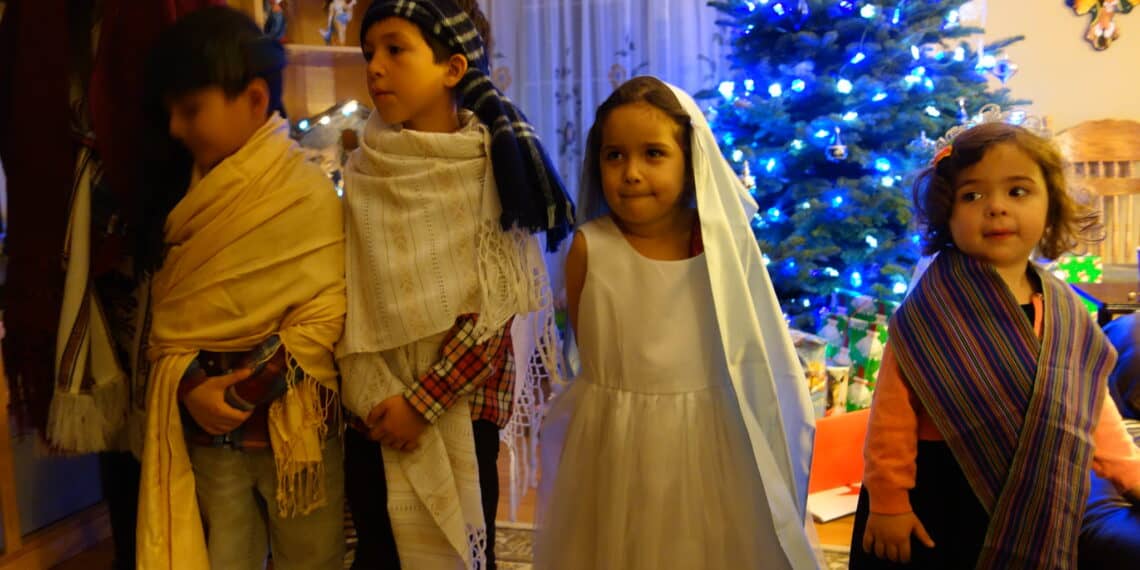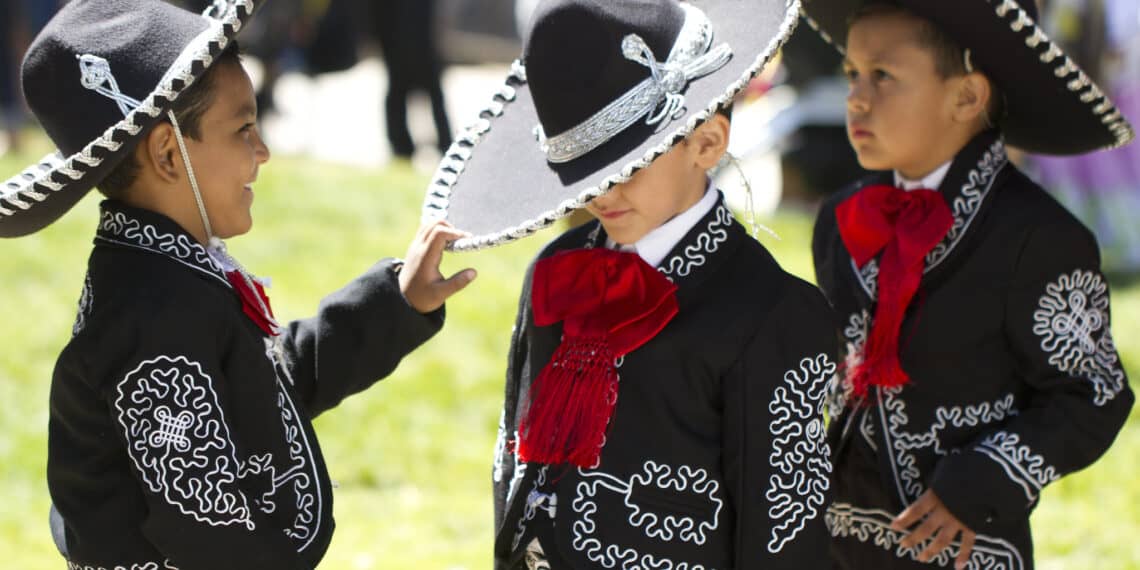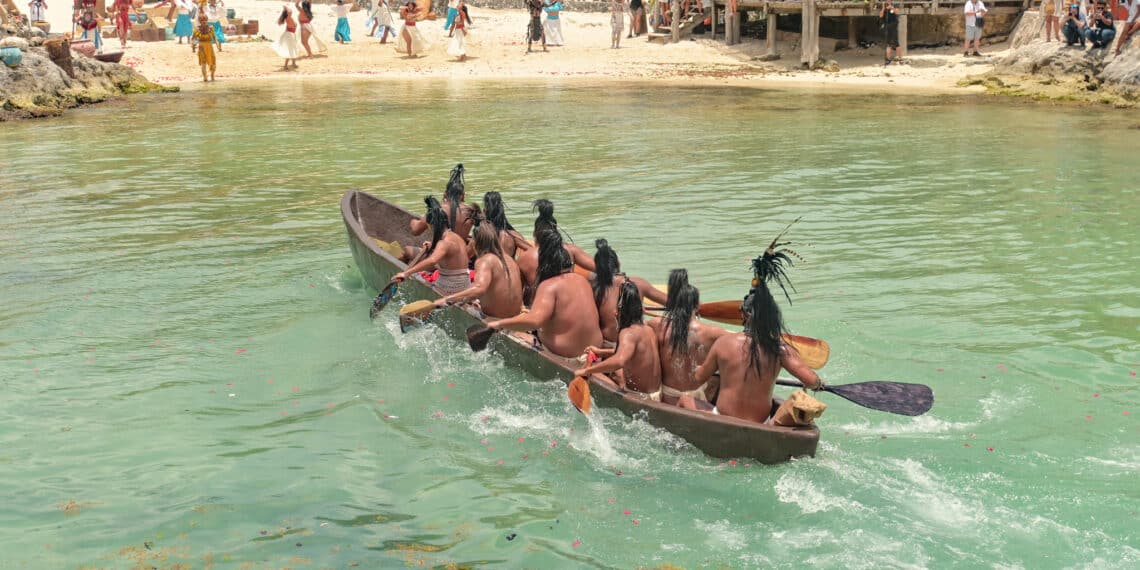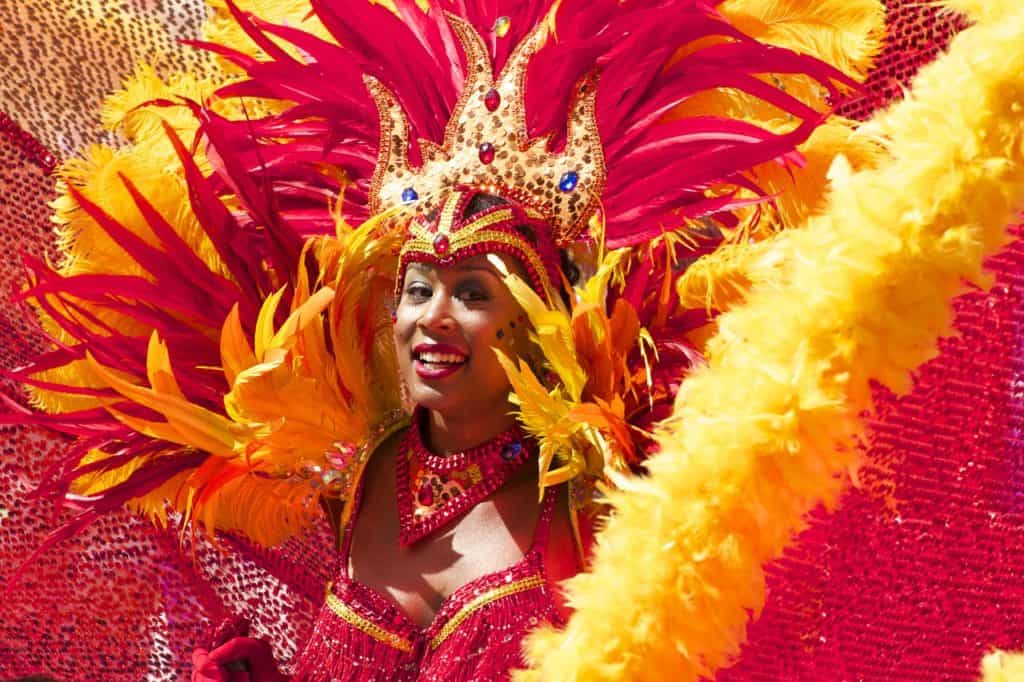Exploring Cozumel Culture: Unusual Local Customs You Can’t Miss
Imagine stepping onto the sun-soaked shores of Cozumel, where the adventure of legendary diving spots like Palancar and Columbia coral reefs is just the beginning of what Cozumel culture offers. Beyond the turquoise waves, the heart of Cozumel beats in San Miguel, brimming with tantalizing dining options and immersive culinary experiences like food tours and cooking classes. Yet, the spirit of adventure calls you farther still, tempting you to explore ancient Mayan ruins or the serene beauty of Passion Island. Known for more than just beach blowouts, Cozumel holds a history ripe with the echoes of the Maya, their mysteries woven into every corner of this enchanting island.
As you embark on a cultural voyage across Cozumel, you’ll dive into traditions and customs that are the proud fabric of this vibrant community. As you embark on a cultural voyage across Cozumel, you’ll dive into traditions and customs that shape the proud fabric of this vibrant community. You’ll uncover Cozumel beyond its breathtaking scenery—a rich tapestry of past and present that comes alive. Mayan rituals resonate in every celebration, telling stories of resilience and reverence. This article will introduce you to the unusual local customs, including the patriotic fervor of Mexican Independence Day and the historical homage of El Cedral Fiesta. So, prepare to be thrilled by the fascinating tales and vivid traditions that define Cozumel, and discover why the Mayan people, with their enduring legacy, continue to intrigue and inspire to this very day.
Carnaval – A Festival of Colors and Traditions
As you wander through the vibrant streets of San Miguel during late February or early March, you’ll find yourself swept up in the whirlwind of colors and traditions that is the Cozumel Carnival. This annual festival, a pre-Lenten celebration, is a time when the island’s cozumel culture bursts forth in an exuberant display of pageantry and joy. Here’s what you can expect from this extraordinary event:
Parades and Costumes: The streets come alive with parades featuring locals in elaborate costumes, dancing to the rhythm of infectious music against a backdrop of decorated floats. You’ll witness the traditional “Jarana” dance, a lively display of footwork and grace, and the “Danza de los Voladores,” a breathtaking aerial performance rooted in ancient Mayan rituals. These parades are not just a feast for the eyes, but a testament to the island’s spirit and communal pride.
Carnival Royalty: Feel the excitement in the air as the King and Queen of the Carnival, chosen from among Cozumel’s own, leads the festivities. Their coronation is a grand affair, marking the official start of the carnival and setting the tone for the days of revelry to follow.
Culinary Delights: Amidst the dancing and music, take a moment to savor the flavors of Cozumel. Traditional Mexican cuisine and local specialties abound, with food stalls and vendors offering everything from tangy ceviche to spicy mole.
When night falls, the celebration continues with fireworks painting the sky and lively parties that spill onto the beaches and into the night. The Cozumel Carnival is not just a fleeting moment of fun; it’s a deeply rooted tradition with over 150 years of history, making it one of the oldest and most cherished carnivals in Mexico. It’s a time when families come together, friends make fresh memories, and the entire community celebrates the cultural heritage that makes Cozumel unique.
As you immerse yourself in this festive atmosphere, remember that the Cozumel Carnival is a highlight of the year for both locals and visitors. It’s a time when the island’s identity shines brightest, inviting everyone to participate in the joyous celebration of life. So mark your calendars for the upcoming Cozumel Carnivals and be part of a tradition that continues to enchant and unite people in a shared experience of culture and revelry. And while you’re here, ensure that you explore the island’s other treasures, including the stunning coral reefs and the ancient Mayan ruins. Each of these attractions provides its own unique glimpse into Cozumel.

Los Tres Reyes Magos – A Unique Christmas Tradition
As the sun sets on the festive season in Cozumel, the warmth of tradition beckons you to embrace the charm of Los Tres Reyes Magos, a celebration interwoven with the island’s rich tapestry of customs. On January 6th, Cozumel culture shines as families uphold the tradition of gift-giving, reminiscent of the twelve-day journey of the Magi to present their offerings to the infant Jesus. This day, known as Día de Los Reyes, invites children to partake in a practice parallel to expecting Santa Claus in other cultures, placing their shoes on the windowsill the night before, awakening to find them filled with gifts in the morning.
Rosca de Reyes: Indulge in the culinary centerpiece of this festivity, the Rosca de Reyes, sweet bread that conceals a tiny figurine of baby Jesus. Whoever finds this small treasure within their slice will be blessed with good luck for the year and will have the privilege of hosting a tamale dinner on February 2nd, during Candelaria. This delightful tradition not only tantalizes your taste buds but also fosters a sense of community and shared responsibility.
La Merienda: As dusk approaches on January 5th, families in Cozumel gather for La Merienda, a pre-dinner snack featuring the Rosca, savory tamales, and heartwarming beverages like cocoa or atole. This gathering is a tribute to the revered date of Los Tres Reyes Magos, blending the cozumel culture with flavors and fellowship.
Letters to the Magi: In a heartfelt expression of childhood wonder, children pen letters to the Magi, articulating their most desired toys. Families place these letters inside a shoe, alongside offerings of water, hay, and food for the animals that have carried the Kings on their journey, symbolizing hospitality and gratitude.
While Santa Claus has eclipsed the tradition of Los Tres Reyes Magos in urban areas, Cozumel remains a bastion of this cultural gem, ensuring that the essence of what is Cozumel known for remains vibrant and intact. This tradition not only marks conclusions the Christmas season in Mexico, but is also a prelude to the biggest sales of the year, echoing the celebratory spirit of the island.
As you immerse yourself in the cozumel culture, remember that the traditions of the Mayan people are not relics of the past but living practices that continue to define what is Cozumel Mexico known for. The people of Cozumel celebrate the Mayan rituals and customs, such as Los Tres Reyes Magos, with enthusiasm, inviting you to partake in the joy and community that define Cozumel Mexico as an island of timeless culture and celebration.

Mexican Independence Day – A Night of Patriotic Pride
On September 16th, you’ll witness the pulsating heart of Cozumel culture as the island erupts in a fervent celebration of “El Grito de Dolores,” marking Mexico’s storied cry for independence. The night prior, September 15th, sets the stage for a spectacle of patriotic pride, where the municipal president reenacts the historic call to arms, followed by a ceremonial 21-gun salute, the resonant ringing of the city hall’s bell, and the stirring notes of the Mexican national anthem echoing through the air.
Vibrant Plaza del Sol: Join thousands of locals and visitors in the main square, Plaza del Sol, where the air buzzes with anticipation. Here, Mexican flags wave, traditional songs fill the air, and rhythmic dancing ignites the night, creating an unforgettable atmosphere of unity and jubilation.
Feast of Flavors: As the celebrations unfold, indulge in a feast for the senses with food stalls dotting the plaza. Treat yourself to the sweet corn delight of esquites, the crispy and sweet marquesitas, and the savory depth of tamales. Don’t miss the chance to taste the patriotic Chiles en Nogada, a dish that mirrors the Mexican flag’s colors, offering a flavorful representation of national pride.
The following day, the spirit of independence continues to soar with a grand parade showcasing the island’s rich heritage. Floats adorned with vibrant colors, traditional dancers moving to ancestral rhythms, and marchers in uniform fill the streets, while a nearby fair beckons with games, shopping, and more culinary wonders.
Embrace the cozumel culture by donning traditional attire, with men in charro suits and women in colorful dresses, embodying the cultural essence of the festivities. As you immerse yourself in the revelry, you’re not just witnessing a celebration; you’re taking part in a living tradition that honors the resilience and spirit of the Mayan people and all Mexicans. People know Cozumel for its deep-seated reverence for its roots and joyous embrace of its vibrant present.
El Cedral Fiesta – Honoring History with Celebration
As the sun casts its golden glow over Cozumel, your senses are in for a treat at the El Cedral Fiesta, a vibrant tapestry of history and celebration that has adorned the island’s cultural landscape for over 170 years. This festival is a heartfelt homage to an early settler’s promise and the enduring spirit of the island’s ancestors, from the Mayan to the Spanish eras. Here’s what you can look forward to when you plan your visit to coincide with this illustrious event:
Historical Significance: Step back in time as you explore the rich history that gave birth to the El Cedral Fiesta, started by Casimiro Cárdenas. After surviving a brutal attack, he vowed to honor a small wooden cross, a symbol of resilience that now anchors this annual festival. As you wander through the town of El Cedral, you’ll witness some of the oldest vestiges on the island, tangible connections to a past that has shaped what is Cozumel known for today.
Festival Activities: The end of April and the beginning of May come alive with a cornucopia of activities that draw thousands of guests each year. Immerse yourself in the cozumel culture with:
Traditional rodeos and bullfights that showcase the island’s adventurous side.
Horse racing and music that pulsate through the air, inviting you to join in the rhythm of Cozumel.
Dancing and roast meat feasts that tantalize your taste buds and offer a glimpse into the communal spirit of the Mayan people.
Exhibitions of regional handicrafts and local art, where the vibrant colors and intricate designs tell their own stories of Mexican culture and traditions.
Plan Your Trip: To understand what is Cozumel Mexico known for, synchronize your travel plans with the El Cedral Fiesta. Although the exact dates for the upcoming year are yet to be announced, this event unfolds in the warmth of the Caribbean spring. By timing your visit to this famous event, you’ll not only bask in the festive ambiance but also join a community that celebrates its history with pride and joy, offering an authentic experience of Mayan rituals and the cozumel culture.

The Mayan Sacred Journey
The Sacred Maya Crossing, also known as the Travesía Sagrada Maya, is a sacred ritual that dates back to the time of the ancient Mayans. It is a reenactment of the historic voyage made by the Mayans from Polé (now Xcaret) to Cuzamil (now Cozumel) to seek the wisdom and blessings of the goddess Ixchel, the Mayan deity of fertility, the moon, and gestation.
In the ancient Mayan civilization, the Sacred Maya Crossing was a significant event that symbolized the renewal of the cosmos and the continuous rhythm of life. According to Mayan beliefs, undertaking this arduous journey allowed them to communicate with the gods, seek guidance, and ensure the prosperity and fertility of their lands.
The pilgrimage to Cozumel was not only a spiritual endeavor but also an opportunity for trade and cultural exchange. The Mayans would bring their goods and products to exchange with the inhabitants of the island, creating a vibrant marketplace of commerce and connection.
Rebirth of the Sacred Maya Journey
When the European conquerors arrived, they caused the Sacred Maya Crossing to stop being celebrated, as they suppressed the indigenous traditions in favor of the new religious and commercial interests. However, the Mayan successors and the forward-thinking minds of Grupo Xcaret, together with the Government of the State of Quintana Roo, recognized the importance of preserving and reviving the Mayan customs.
Thus, the Sacred Maya Crossing was reborn, breathing new life into the ancient ritual. Today, Grupo Xcaret organizes this extraordinary event, Xel-ha, and Chankanaab parks, bringing together a diverse community of volunteers, locals, nationals, and foreigners who share a passion for the Mayan culture and its rich heritage.
Preparing for the Sacred Journey
To ensure the success of the Sacred Maya Crossing, months of preparation and training are dedicated by the organizers. Young volunteers, driven by their love for the culture and their desire to partake in this extraordinary experience, undergo rigorous physical and mental conditioning.
The key to their success lies in their training, which includes rowing, swimming, flotation, physical endurance, and first aid. These dedicated individuals immerse themselves in the traditions and customs of the ancient Mayans, embracing their role as torchbearers of this sacred journey.
Symbolically, the crossing of the sea represents a spiritual death and rebirth for the participants. As they embark on their canoes, painted in the traditional Mayan style, they leave behind the familiar shores and venture into the unknown, traversing the depths of the Cozumel channel.
The Canoe Journey
At the break of dawn, the canoes set sail from Xcaret Eco-archaeological Park, accompanied by the cheers and support of the community. The rhythmic sound of paddles hitting the water fills the air as the canoeros and canoeras navigate the capricious waves and currents, their oars cutting through the water with determination.
The journey spans approximately 28 kilometers, taking the canoers on a six-hour expedition under the scorching sun. Each canoe carries a crew of 4 to 6 members, each with a specific role. At the forefront, the “Proel” sets the pace and tackles the challenging waves. The rest of the crew paddles in unison, alternating their strokes from right to left. Positioned at the rear, the helmsman is responsible for maintaining the balance and stability of the canoe.
Spiritual Rebirth and Culmination
As the canoes approach the shores of Cozumel, the community eagerly awaits their arrival and greets the volunteers with open arms, gifts, and celebratory feasts, filling the atmosphere with anticipation and joy. It is a moment of triumph, not only for the individuals who have completed the journey, but also for the Mayan community and all those who have supported the event.
Each volunteer who arrives on the mainland carries with them a unique story of personal challenge, cultural devotion, and self-liberation. The culmination of the Sacred Maya Crossing is marked by closing dance ceremonies, where the participants and the community come together to honor the ancient traditions and celebrate the months of dedication and effort.
Conclusion
As your journey through the vibrant streets and festive celebrations of Cozumel comes to a close, you carry with you the pulsating rhythms of the island’s heart—a heart that beats to the drum of its rich cultural heritage. The cozumel culture is an intricate mosaic, each piece a story of the past, a ritual reborn, or a flavor savored, all coming together to create a breathing work of art that invites you to step in and become part of its narrative.
Cultural Immersion: Engage with the friendly locals, whose warmth is as inviting as the island’s sunny climate, to understand what is cozumel known for. Their stories, their laughter, and their traditions are the threads that weave the fabric of Cozumel’s culture, offering insights into a world where the Mayan people and their Mayan rituals continue to echo through time.
Architectural and Historical Marvels: Embark on a pilgrimage to San Gervasio, the spiritual nexus for the Mayans, or explore El Pueblo del Maíz, a park that bridges the gap between the present and the days of the Mayan ancestors. These sites are not just attractions but portals to an era that shaped the essence of what is Cozumel Mexico known for today.
Arts and Festivities: Delight in the Museum of Traditional Mexican Arts and Cozumel Interactive at the Discover Mexico Cultural Park, where the island’s artistic pulse thrives. Whether it’s during the vibrant Carnaval, the reflective Los Tres Reyes Magos, or the patriotic fervor of Mexican Independence Day, each celebration is a vivid brushstroke on the canvas of cozumel culture, painting a picture of an island that is as much a feast for the senses as it is for the soul.
With temperatures that beckon visitors year-round, from the gentle breezes of the 70s in winter to the sun-kissed 90s of summer, Cozumel stands as a timeless destination. Here, the cozumel culture is not just observed but lived—a dance, a dish, a dive into the clear blue, each a step deeper into the heart of an island that knows the true meaning of celebration.
Frequently Asked Questions
The Cozumel Carnival is a vibrant celebration featuring parades with elaborate costumes, traditional dances like the “Jarana” and the “Danza de los Voladores,” and culinary delights ranging from tangy ceviche to spicy mole. The carnival also includes the coronation of the King and Queen, fireworks, and lively beach parties. With over 150 years of history, it’s one of Mexico’s oldest and most cherished carnivals, offering a unique glimpse into Cozumel’s culture and community pride.
Los Tres Reyes Magos, celebrated on January 6th, is a cherished tradition in Cozumel where families exchange gifts and indulge in the sweet bread called Rosca de Reyes. Children place their shoes on the windowsill the night before, awakening to find them filled with gifts. The tradition also includes La Merienda, a pre-dinner snack, and writing letters to the Magi. Despite the growing presence of Santa Claus, Cozumel remains steadfast in honoring this cultural gem, fostering a sense of community and shared responsibility.
Mexican Independence Day, celebrated on September 16th, is a vibrant display of patriotic pride in Cozumel. The festivities include reenactments of “El Grito de Dolores,” ceremonial salutes, and lively gatherings in Plaza del Sol with traditional music, dancing, and culinary delights such as Chiles en Nogada. The celebration continues with a grand parade featuring floats, traditional attire, and a fair with games and shopping, offering visitors a rich immersion into Cozumel’s cultural heritage and vibrant present.
The El Cedral Fiesta, held for over 170 years, pays homage to Cozumel’s history and resilience. Visitors can expect historical significance with activities like traditional rodeos, bullfights, horse racing, and exhibitions of regional handicrafts. It’s a time to delve into the island’s past while experiencing the vibrant spirit of its people. Syncing travel plans with this event offers an authentic glimpse into Mayan rituals and Cozumel’s unique culture, enriching the overall experience of the island.


